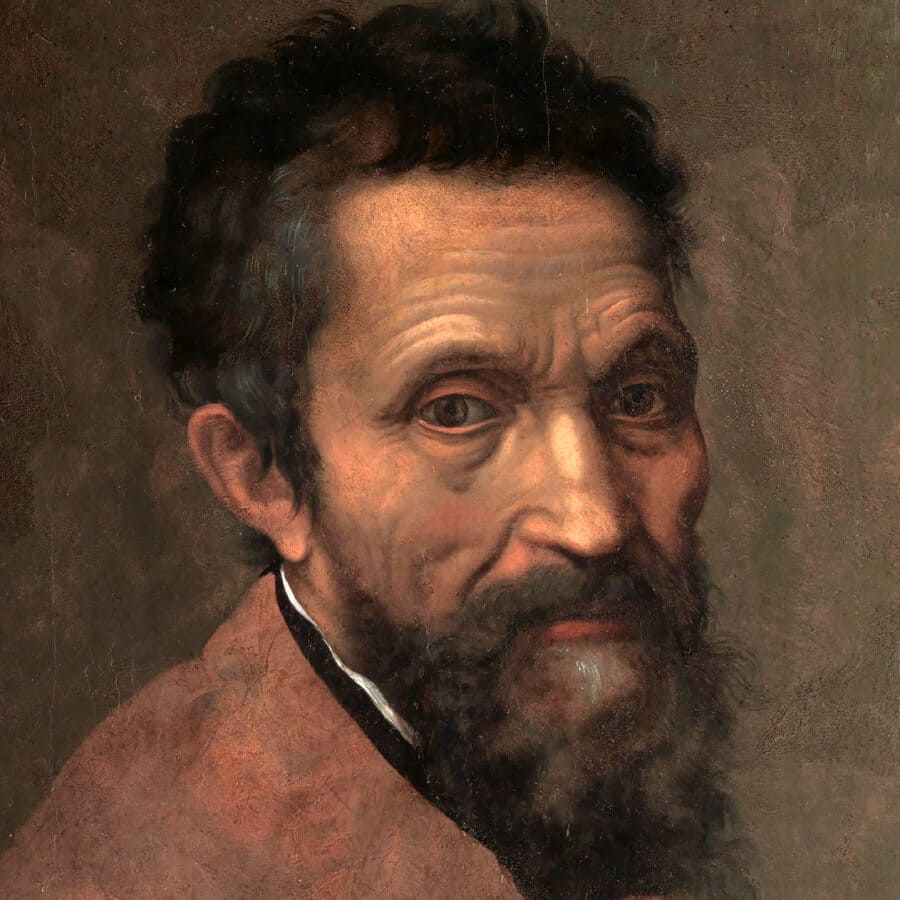Introduction to Michelangelo
Michelangelo Buonarroti (1475–1564) stands as one of the towering figures of the Renaissance, celebrated for his monumental sculptures like David and his breathtaking frescoes in the Sistine Chapel. A painter, sculptor, architect, and poet, Michelangelo’s multifaceted genius shaped Western art, leaving an enduring legacy that continues to inspire collections, such as those at the Vietnam art gallery. In this article, we will delve into Michelangelo’s biography, his iconic artworks, his contributions to Renaissance art, and his lasting influence. Discover why Michelangelo is revered as the “artist of God” and how his work continues to captivate the world!
Biography of Michelangelo
Who Was Michelangelo?
Michelangelo’s biography begins in Caprese, near Florence, Italy, where he was born in 1475 to a middle-class family. According to the Vatican Museums, Michelangelo showed an early passion for art, despite his father’s desire for him to pursue a career in administration. At age 13, he apprenticed under the painter Domenico Ghirlandaio, marking the start of his extraordinary artistic journey.
- Early Years (1475–1496): In Florence, Michelangelo honed his skills in painting and sculpture, influenced by the powerful Medici family, who were patrons of the arts.
- Rome Period (1496–1505): He created masterpieces like Pietà and began working for the papacy, establishing his reputation as a prodigy.
- Later Years (1546–1564): Michelangelo designed St. Peter’s Basilica and completed his final works, leaving a profound legacy in art and architecture.
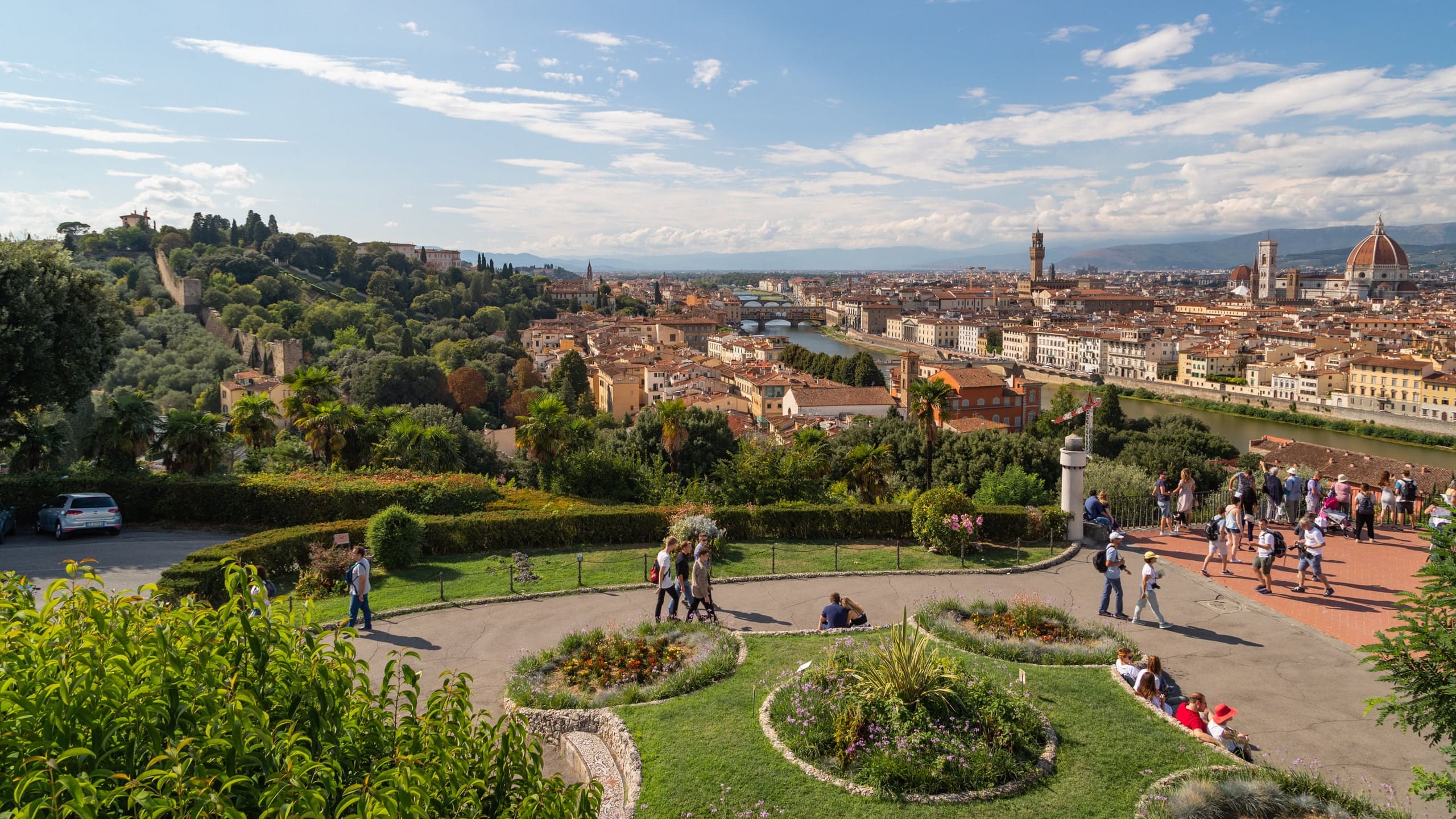
Michelangelo’s Personal Life
Michelangelo lived a life wholly devoted to his craft, remaining unmarried and largely private about his personal affairs. Known for his fiery temperament yet boundless passion, he saw his work as a divine calling. According to Giorgio Vasari, a contemporary biographer, Michelangelo viewed himself as fulfilling a sacred mission:
“True works of art are but a shadow of divine perfection.” – Michelangelo.
He often worked in solitude, striving for perfection in every detail. His relentless pursuit of excellence defined his life, earning him admiration and respect, even amidst personal and professional challenges. Michelangelo’s dedication to his art was not just a profession but a spiritual endeavor, reflecting his deep belief in the transcendent power of creativity.
Artworks of Michelangelo
What Are Michelangelo’s Most Notable Artworks?
Michelangelo’s artworks are cornerstones of Renaissance art, blending technical precision with profound emotional depth. His sculptures and paintings are celebrated for their lifelike quality and expressive power. Below are his most iconic masterpieces:
-
- David (1501–1504)
- Description: A 5.17-meter marble statue displayed at the Galleria dell’Accademia in Florence, depicting the biblical hero David.
- Features: The sculpture showcases the idealized human form, with intricate details in musculature and a powerful, focused expression.
- Significance: A symbol of strength and courage, David represents the spirit of Florence and Renaissance ideals.
- Pietà (1498–1499)
- Description: A marble sculpture in St. Peter’s Basilica, Vatican, showing the Virgin Mary cradling the body of Jesus.
- Features: The work captures tender grief and exquisite detail, with Mary’s serene expression contrasting her sorrow.
- Significance: One of the most moving religious sculptures, it showcases Michelangelo’s mastery at age 24.
- The Creation of Adam (1508–1512)
- Description: A fresco on the Sistine Chapel ceiling, depicting God giving life to Adam through a near-touching of fingers.
- Features: Dramatic composition and the iconic gap between God’s and Adam’s fingers evoke profound emotion.
- Significance: A universal symbol of the connection between humanity and divinity.
- David (1501–1504)
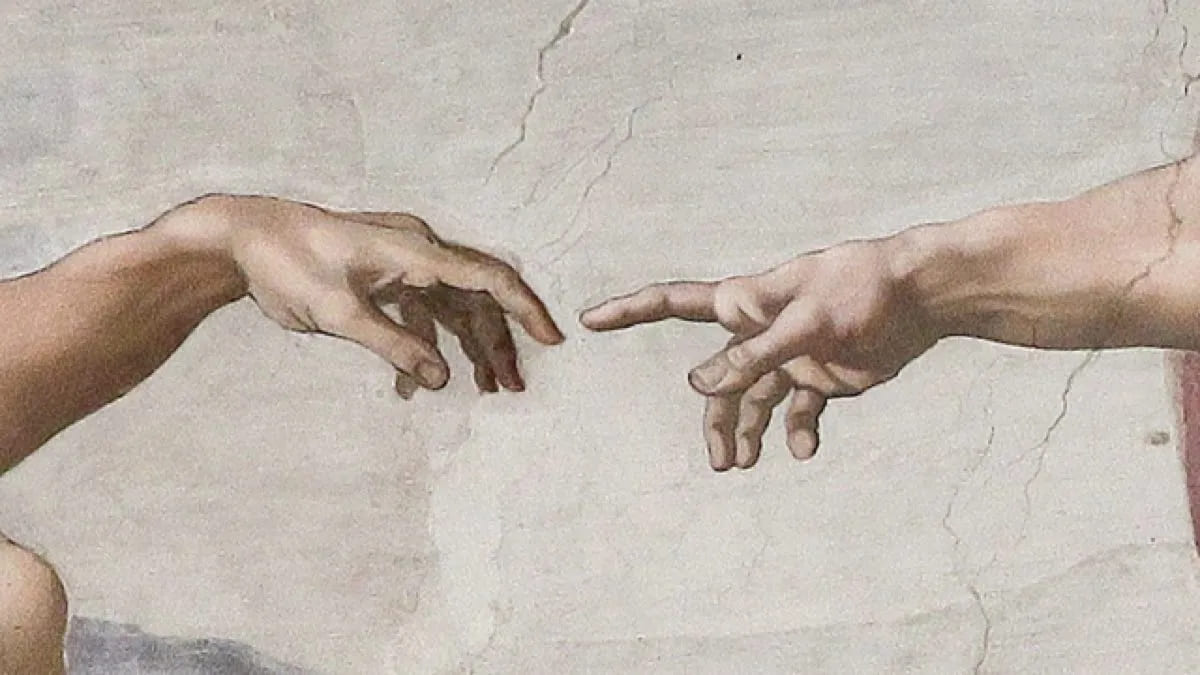
- Sistine Chapel (1508–1512)
- Description: A series of frescoes on the ceiling and walls of the Sistine Chapel, including scenes from the Old Testament like The Great Flood.
- Features: Over 300 figures painted under grueling conditions, showcasing dynamic poses and vivid storytelling.
- Significance: The pinnacle of Renaissance fresco art, blending theology, art, and philosophy.
Why Do Michelangelo’s Artworks Endure?
Michelangelo’s artworks remain timeless due to their fusion of technical brilliance and emotional resonance. According to the Uffizi Gallery, his sculptures surpassed the achievements of ancient Greek masters, while his frescoes set new standards for narrative art. His works transcend their era, influencing Western art for centuries by embodying the human spirit’s beauty and complexity.
Renaissance Art and Michelangelo
How Does Renaissance Art Relate to Michelangelo?
The Renaissance was a cultural rebirth that celebrated human beauty, nature, and scientific inquiry. Michelangelo, alongside Leonardo da Vinci and Raphael, was a central figure in this movement. His works reflect key Renaissance characteristics:
- Humanism: Celebrating the beauty and potential of the human form, as seen in David’s idealized physique.
- Sculptural Precision: Creating flawless marble sculptures with no visible tool marks, showcasing technical mastery.
- Religious Emotion: Infusing deep faith into works like the Sistine Chapel frescoes, conveying spiritual narratives.
Michelangelo’s ability to blend these elements elevated Renaissance art, making it a bridge between classical antiquity and modern creativity.
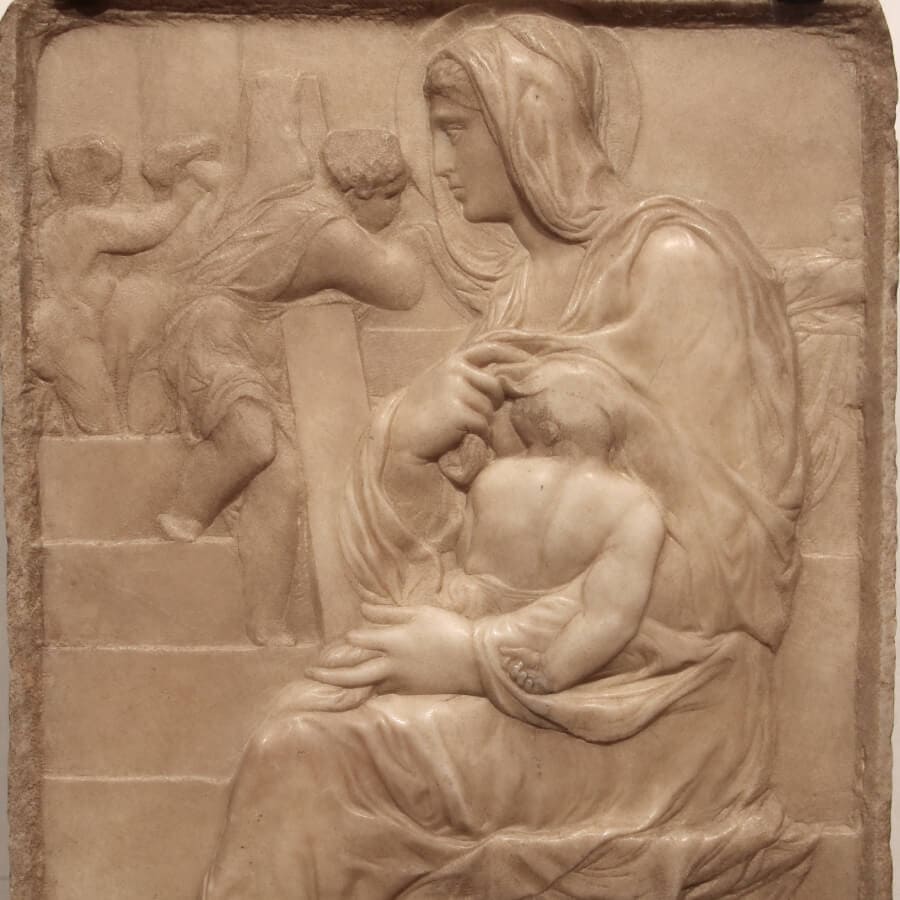
Why Is Michelangelo a Renaissance Icon?
Michelangelo pushed Renaissance art to its zenith through innovation in sculpture and painting. According to the Vatican Museums, his work not only defined the era but also inspired later artists like Bernini and modern painters, cementing his role as a visionary who transformed artistic expression.
Michelangelo’s David
What Makes Michelangelo’s David Special?
Michelangelo’s David is one of the world’s most iconic sculptures, carved from a single block of marble. It stands as a testament to his genius:
- Sculptural Technique: Michelangelo transformed marble into a lifelike figure, with detailed muscles and veins.
- Expression: David’s focused gaze and tense posture convey readiness to face Goliath.
- Cultural Symbol: Representing heroism and the spirit of Florence, it became a civic icon.
“I saw the angel in the marble and carved until I set him free.” – Michelangelo.
This quote encapsulates Michelangelo’s approach, seeing the figure within the stone and meticulously revealing it.
How Did Michelangelo Create David?
Michelangelo spent over two years (1501–1504) crafting David, working with a damaged marble block that others had deemed unusable. His precise carving technique removed layers of stone to reveal a perfectly proportioned figure, a process that required immense skill and patience. The result was a sculpture that redefined the possibilities of marble work.
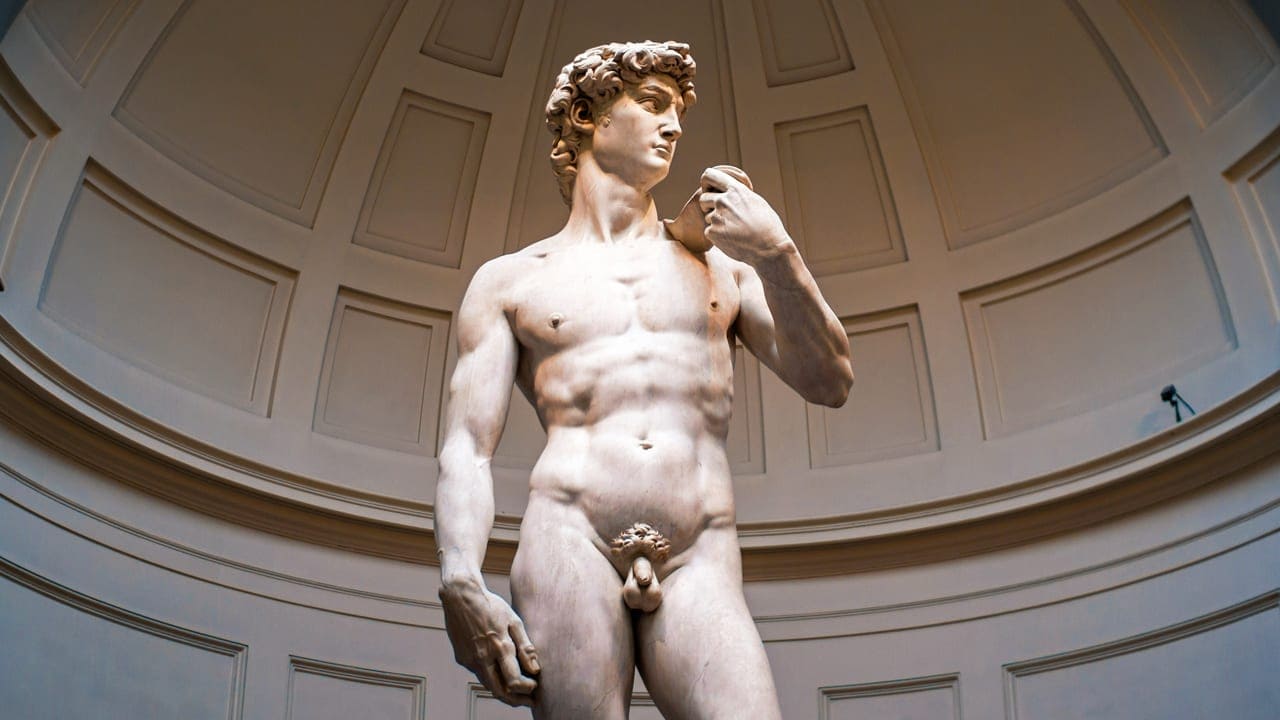
Michelangelo and the Sistine Chapel
What Is the Significance of the Sistine Chapel in Michelangelo’s Career?
The Sistine Chapel represents Michelangelo’s greatest achievement in painting. According to the Vatican Museums, he spent four grueling years (1508–1512) painting its ceiling, overcoming physical and emotional challenges:
- Scale: Over 300 figures across 500 square meters, depicting scenes from Genesis.
- Conditions: Painting while leaning backward caused neck and eye strain.
- Content: Iconic scenes like The Creation of Adam and The Great Flood convey profound theological narratives.
Despite his preference for sculpture, Michelangelo’s work in the Sistine Chapel proved his versatility and unmatched talent.
Why Is the Sistine Chapel a Masterpiece?
The Sistine Chapel is a pinnacle of Renaissance art, blending technical skill, religious depth, and philosophical insight. Its frescoes are not merely decorative but tell a story of creation and human destiny, resonating with viewers through their emotional and visual power.
Influence of Michelangelo in Vietnam
How Did Michelangelo Influence Vietnamese Art?
Though Michelangelo lived far from Vietnam, his influence reached Vietnamese artists, particularly through the École des Beaux-Arts de l’Indochine, where Western techniques were taught:
- Tô Ngọc Vân: Incorporated Michelangelo’s use of light and composition into his oil paintings, adding depth to Vietnamese scenes.
- Nguyễn Tường Lân: Drew inspiration from Michelangelo’s expressive figures for religious and cultural artworks.
- Art Exhibitions: Galleries in Hanoi and Ho Chi Minh City display works influenced by Renaissance aesthetics, reflecting Michelangelo’s legacy.
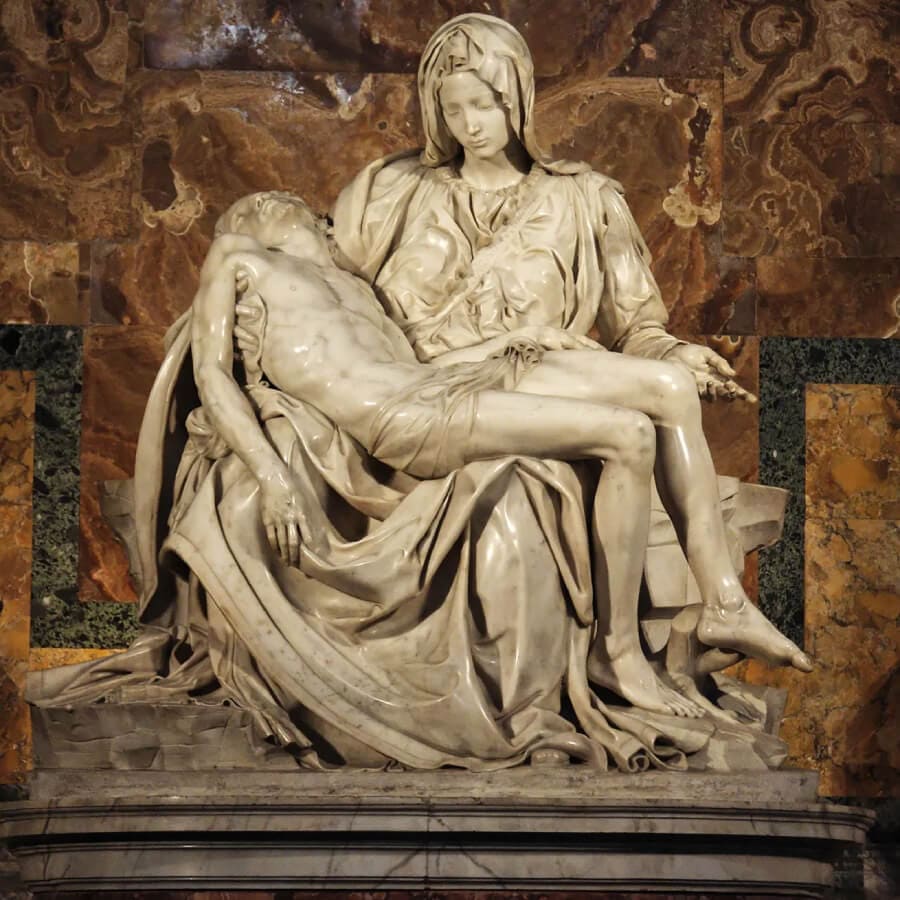
How to Identify Michelangelo’s Influence?
- Sculptural Techniques: Look for Vietnamese sculptures with smooth, detailed forms reminiscent of David.
- Religious Themes: Paintings and sculptures with emotional depth, similar to those in the Sistine Chapel.
- Art Education: Vietnamese art schools include Michelangelo’s work in their curricula, emphasizing his techniques as foundational to Western art.
These traces of Michelangelo’s influence demonstrate his global impact, even in regions far removed from his native Italy.
Exploring Michelangelo’s Art
How to Approach Michelangelo as a Beginner
For those new to Michelangelo’s work, here are accessible ways to engage with his art:
- Visit Museums: See David at the Galleria dell’Accademia in Florence or the Sistine Chapel at the Vatican.
- Read Books: Michelangelo and the Pope’s Ceiling by Ross King offers a vivid account of his career.
- Watch Documentaries: Films like The Agony and the Ecstasy on Netflix explore his life and work.
- Try His Techniques: Experiment with light and form in painting or sculpting to emulate Michelangelo’s style.

Tips for a Deeper Understanding
To gain a richer appreciation of Michelangelo, consider these strategies:
- Study His Poetry: Michelangelo’s poems reveal his philosophical and spiritual insights, complementing his visual art.
- Compare with Renaissance Peers: Contrast his works with those of Leonardo da Vinci and Raphael to appreciate his unique contributions.
- Take Courses: Online courses on Coursera about Renaissance art provide in-depth knowledge of his techniques and context.
Michelangelo, an icon of the Renaissance, left an immortal legacy through masterpieces like David, the Sistine Chapel, and Pietà. His biography tells the story of an artist wholly devoted to his craft, transforming marble and paint into timeless works of art. With his diverse talents and deep faith, Michelangelo redefined how we perceive beauty and spirituality in art. Explore his legacy through museums, books, or by experimenting with his techniques to feel his genius. Share this article to spread the story of this Renaissance titan!
Next Steps:
- View David online or at the Galleria dell’Accademia in Florence.
- Learn more about the Sistine Chapel through books or online resources.
- Share this article to inspire friends to discover Michelangelo’s genius!

